
Introduction to Bunions
A bunion can be defined as a deformity, to be more precise an enlargement of the bone tissue around the joint at the base of the big toe. The big toe generally turns toward the second toe which makes the bone of the base of the big toe to protrude outwards. The exposed tissue is prone to irritation and pressure and becomes swollen and tender.
Bunions are more common in women due to the fact that women tend to wear rather uncomfortable and ill-fitting shoes. In some people bunions occur due to improper walking or they just run in family. The major problem related to a bunion is not the swelling but the pain which occurs each time a bunion is in contact with shoes. The pain can significantly interfere in every day activities, even the simplest ones. Fortunately, there are several treatment methods for bunions and one should seek for the most convenient.
Bunion Pain Relief
Initial treatment for bunions should start with specific exercises. These exercises increase big toe's flexibility and mobility. One of the exercises is, grabbing of the big toe and pulling it and then holding it in a particular position for a while. Another exercise that is excellent for stretching of the big toe is to grasp the big toe and stretch it in different directions, repeating the process several times. The bunion exercises are supposed to be repeated several times a day. Prior any kind of exercise a person should consult a doctor who will explain the basic exercises and teach the patient how to perform them.
Apart from exercises one may benefit from bunion pads and shields and bunion splints. Bunion gel pads and shields are highly effective in reduction of abrasion, pressure and friction caused by wearing shoes. A bunion splint may be worn during day or at night. It provides proper alignment for the big toe. And finally, there is one conservative option- special shoes which may relieve the pain caused by bunions.
The pain associated with bunions may be so severe that one cannot alleviate it with exercises and other non-surgical treatments. These patients are generally recommended surgical procedure whose goal is to realign the affected joint and correct the deformity. Surgery is the last option and is only recommended if all conservative options have failed to provide with desirable results. The actual surgical procedure depends on whether there is additional damage to the joint (such as arthritis) or the joint is simply deformed without any additional damage to the joint tissues.



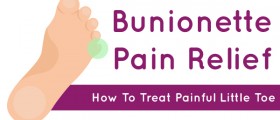


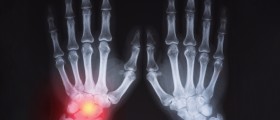
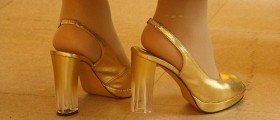


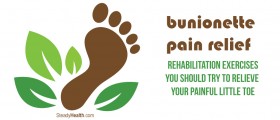
-Symptoms,-Diagnosis,-Treatment_f_280x120.jpg)

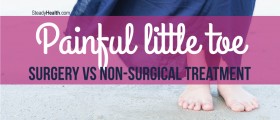

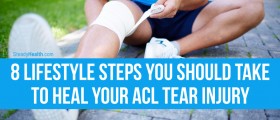

Your thoughts on this
Loading...